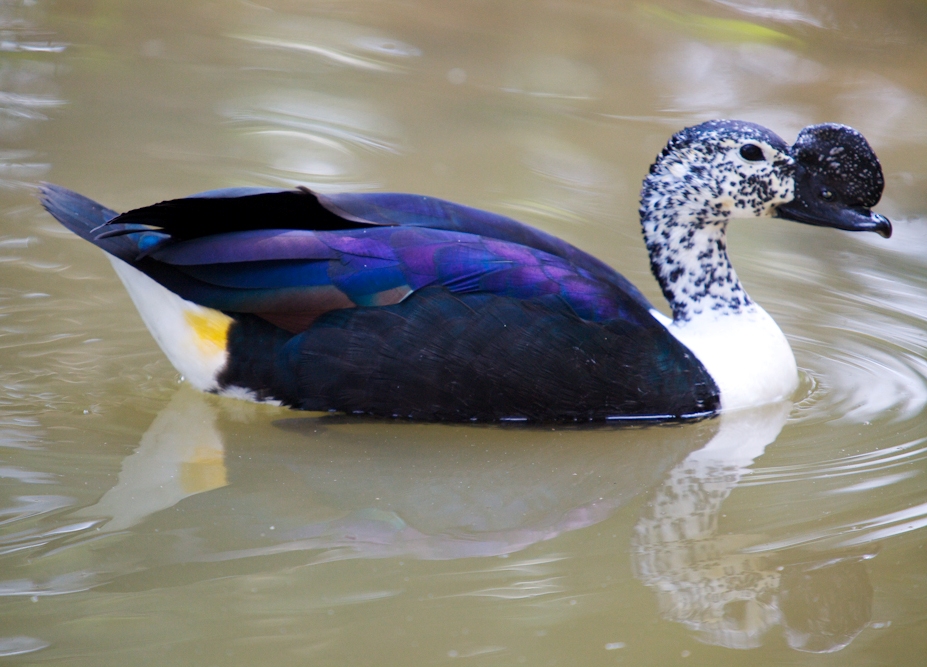
Knob-billed duck, or Comb duck(Sarkidiornis melanotos)
Phylum —chordata
Class — aves
Order — anseriformes
Family — anatidae
Genus –sarkidiornis
Appearance
This common species is unmistakable. It is one of the largest species of duck. Length can range from 56 to 76 cm (22 to 30 in), wingspan ranges from 116 to 145 cm (46 to 57 in) and weight from 1.03 to 2.9 kg (2.3 to 6.4 lb).
Adults have a white head freckled with dark spots, and a pure white neck and underparts. The upperparts are glossy blue-black upperparts, with bluish and greenish iridescence especially prominent on the secondaries (lower arm feathers). The male is much larger than the female, and has a large black knob on the bill. Young birds are dull buff below and on the face and neck, with dull brown upperparts, top of the head and eyestripe.
Habitat
It is a duck found in tropical wetlands in Sub-Saharan Africa, Madagascar and the Indian Subcontinent from northern India to Laos and extreme southern China.
The knob-billed duck is mainly sedentary in its range. Seasonal movements and dispersions occur, according to the water availability.
Behavior
The knob-billed duck may cling into trees thanks to its strong claws. It occurs singly or in pairs, and also in small groups of 30-40, often with other duck species.
During the dry season, they gather in larger flocks at permanent waters. Later, the pairs form at the beginning of the rainy season. Outside the breeding season, the knob-billed duck is fairly gregarious. But during the nesting period, it is territorial but not very strongly.
Diet
This duck feeds on vegetation by grazing or dabbling and to a lesser extent on small fish, invertebrates, and seeds.
Reproduction
The breeding season usually occurs during and after the rainy season.
The knob-billed duck often breeds in holes in dead trees, between 6 and 9 meters above the ground and sometimes, relatively far from water. They also nest occasionally on the ground in tall grass or amongst stones near water, or in cavity in bank or wall. Usually, the same nest-site is used year after year. The nest is a rough structure made with sticks and coarse grass. It is lined with softer materials such as grass, reeds, leaves and feathers, but no down.
The female lays 7-15 yellowish-white eggs, and incubates during about 28-30 days. At hatching, the chicks have greyish-brown down above and yellowish face and underparts. They are precocial and the family is often seen in small group after hatching. The young fledge about ten weeks later.
The male defends the female and may be aggressive against intruders if the young are threatened.
In captivity
The average lifespan in captivity is about 25 years.
The owner needs to control the availability of water for ducks in sufficient quantities. In the summer keepers should feed the birds correctly: give green grass and small fish. The knob-billed duck likes sand, which should always be available to it in a special tank. So that the birds can survive in a hot afternoon or heavy rain, keepers build a canopy.
The diet of ducks should include different greens from reservoirs: sea urchins, kelp and distichlis.
 Russian
Russian
 English
English
























